Published August 2, 2025 05:55AM
Destinations & Things To Do
5 Adventure Activities To Try In Rishikesh | Travel News
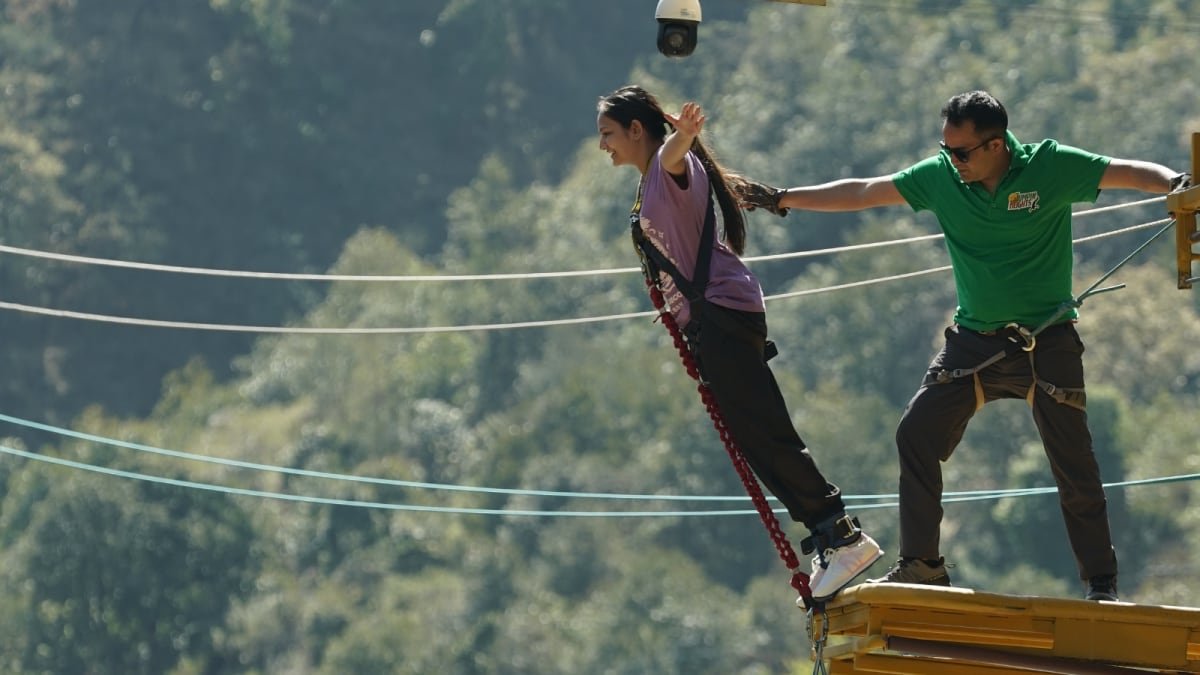
Last Updated:
Rishikesh: From aerial thrills to river rushes, this Himalayan haven will test your limits and reward you with stories for life
Whether you’re jumping off cliffs or chasing rapids, Rishikesh promises one thing: you’ll never see adventure the same way again
There’s a certain serenity to Rishikesh, the hymns of the Ganges, the saffron-clad sadhus, the scent of burning camphor. But step away from the ghats, and you’ll find another side of this spiritual town: one that’s wild, untamed, and pure adrenaline.
Tucked into the Himalayan foothills and laced by turbulent rivers and deep gorges, Rishikesh has quietly become India’s undisputed adventure capital. Whether you’re leaping off a cliff, soaring over the valley, or navigating rapids, the energy here is electric.
Here are five adventure experiences in Rishikesh that will get your pulse racing:
1. Bungee Jumping at Jumpin Heights: India’s Highest Leap of Faith
Where: Jumpin Heights – The Bungy People, Mohan Chatti
Drop: 83 meters of pure freefall
Welcome to India’s original bungee hotspot, and still its boldest. At 83 meters, the platform at Jumpin Heights run by ex-Army officers with international safety standards offers a hair-raising freefall over the rocky Hyul River valley. There’s no mechanical pull or rebound. Just gravity. Silence. Then screams.
Why it’s iconic:
This is where India’s bungee culture began and it still reigns supreme. You leave with a jump certificate, a video, and a heart that’s beat faster than ever before.
2. White Water Rafting: Ride the Pulse of the Ganges
Best Routes:
• Brahmapuri to Rishikesh (9 km)
• Shivpuri to Rishikesh (16 km)
• Marine Drive to Rishikesh (24 km)
The Ganges here is more than sacred, it’s fierce. White water rafting in Rishikesh is a rite of passage for the outdoor enthusiast, with frothy rapids that bear deceptively charming names like The Wall, Return to Sender, and Golf Course. Between Grade I and IV rapids, expect icy sprays, bouncing boats, and panoramic Himalayan drama.
Why you’ll love it:
A mix of adrenaline and awe, ideal for beginners or pros, set against one of India’s most scenic backdrops.
3. Giant Swing: Think Bungee, but Broader and Wilder
Where: Jumpin Heights
Swing Distance: Up to 83 meters
If bungee is the freefall, the Giant Swing is the flight. Suspended from the same high platform, you’ll be released into a massive pendulum arc that sweeps across the valley. It’s one part rollercoaster, one part spiritual awakening and all thrill.
Unlike the solitary leap of bungee, the Giant Swing can be done solo or with a partner, making it ideal for brave-hearted duos.
Why it’s unforgettable:
The weightlessness. The arc. The sheer grace of flying through silence at speed.
4. Flying Fox: Zip Through the Sky at 140 km/h
Where: Jumpin Heights – The Bungy People
Strapped horizontally in a harness, you’re launched from one hilltop to another at up to 140 km/h. The Flying Fox is the closest thing to being a superhero — gliding above forests, cliffs, and rivers, with the wind in your face and the Himalayas unfolding around you.
And yes, you can do it tandem with a friend — because some experiences are better when shared (and screamed through).
Why it’s a must-try:
It’s the smoothest, fastest way to drink in the Himalayan scenery at lightning speed.
5. Rock Climbing and Rappelling: Himalayan Highs, One Grip at a Time
Top Spots: Shivalik Hills, Kaudiyala, Neer Garh
For those who like their thrills with a bit of technique, rock climbing and rappelling in Rishikesh offer a deeply satisfying mix of challenge and calm. You’ll scale vertical faces, rappel down craggy cliffs, and engage muscles you didn’t know you had — all under the watchful eye of trained professionals.
Why it stands out:
It’s physical. It’s mindful. And the views from halfway up (or down) are worth every sweaty pull.
Traveller Tip
Adventure season peaks between October and June. Pre-book your activities especially with Jumpin Heights as spots fill up fast. And don’t forget to collect your jump footage, it’ll be your new favorite brag on Instagram.
In Rishikesh, you come for the soul. You stay for the surge.
From aerial thrills to river rushes, this Himalayan haven will test your limits and reward you with stories for life. Whether you’re jumping off cliffs or chasing rapids, Rishikesh promises one thing: you’ll never see adventure the same way again.
Swati Chaturvedi, a seasoned media and journalism aficionado with over 10 years of expertise, is not just a storyteller; she’s a weaver of wit and wisdom in the digital landscape. As a key figure in News18 Engl…Read More
Swati Chaturvedi, a seasoned media and journalism aficionado with over 10 years of expertise, is not just a storyteller; she’s a weaver of wit and wisdom in the digital landscape. As a key figure in News18 Engl… Read More
view comments
- First Published:
Destinations & Things To Do
The Laugavegur Trail | Day 0

Woke Up in the Fog
It’s Day 0. The trail hasn’t started yet, but I have. I woke up at 6:00 a.m., rolled out of my tent at 6:15, and stepped into a foggy Icelandic morning—51 degrees and misty. A little pain in my knees when I stood and surprisingly no stiffness anywhere else. That’s rare. Normally, pavement walks ruin me. But today? I feel… good.
I finished charging my devices, with them both off to charge faster, sipped coffee and ate leftover mapo tofu and tried to pack while racing the clock. My bus to Landmannalaugar was set for 7:45 a.m. I arrived at 7:37 a.m., thanks to the internal video producer clock I’ve never been able to turn off. My pack was a disaster, but who cares? I’d be hiking with just a daypack today. And ending the day in a hot spring.
Doing the Math
While scarfing down breakfast and sorting my gear, I found myself reflecting on how many Europeans I’ve met out here—and how often I’ve had to convert units just to keep up in conversation. Distance, elevation, temperature… it’s a whole different language. So here are my quick-and-dirty shortcuts for trail talk:
-
Celsius to Fahrenheit: Double the Celsius and add 30. It’s not perfect, but it’s close enough for weather chat.
-
Kilometers to Miles: Divide the number by 10, then again by 2, and add the two results. For example, 100 kilometers is 100/10= 10 and 100/2= 50. Then 10 + 50 = roughly 60 miles.
-
Meters to Feet: Multiply by 3 for a rough estimate.
It’s not perfect but good enough to hold your own in an international hiking crowd.
The Bus Ride: Fog Outside And In
About 45 minutes outside Reykjavík, the fog rolled in so thick it erased everything outside the bus window. Which left me alone with the inside of my head—a place that was suddenly loud.
What if I get too cold? What if I lose the trail in the fog? What if my hands freeze? What if I get injured?
If your brain does this, too—spiraling just when you’re on the brink of something exciting—you’re not alone. That’s what fear does.. It just comes up at the worst possible time.
But somewhere in that foggy, frantic moment, my mind reached back to a hike I did with my friend Amanda a couple months before. Seven miles in the pouring rain. It was soaking, squishy, miserable—and the perfect mental training for what I’m doing now. Funny how the brain buries those moments until you really need them. This is what preparing for something big is all about: not just the gear and the fitness, but the quiet work of building up resilience when no one’s watching.
Still, as the miles ticked on and the fog didn’t lift, my thoughts drifted to something even heavier.
A year ago—July 2024—I wasn’t out hiking or prepping for any grand adventure. I was glued to YouTube, binging long-distance trail videos and running 5k’s. I felt… stuck. Flat. Not like myself. And I started to notice a pattern: when I wasn’t hiking regularly, my energy dipped. My joy dimmed. I wasn’t depressed exactly, but something was off—and I knew it.
I knew I needed something to look forward to. Something that would nudge me back to life. Something to train for—not just physically, but emotionally. But there was a catch: my partner wanted a milestone birthday trip to Japan in 2025. That had always been the big plan. And I supported it fully.
So I quietly tucked my Iceland idea into the “someday” file and focused on being supportive. On being realistic. But the truth is, I was also silencing something vital in myself. And at the time, I didn’t realize how much that would matter.
Torn Between Two Dreams
By November, I had strategically saved enough money to cover flights to Japan for both of us. I was serious about showing up for her plan. But I still felt pulled—by the Icelandic Highlands, by the trails, by the version of myself I hadn’t seen in a while. I started researching the Japanese Alps, hoping maybe there was a way to make both things work: her vision and my need to hike something hard and beautiful.
It almost worked. I thought I’d found the perfect compromise. But then the dates shifted. First we looked at May, then September, then maybe March. All totally understandable—there were a lot of moving parts to juggle on her end. But each change made it harder for me to keep the momentum I’d built. My anxiety started to climb. I felt tat I was going to miss out on a hike I knew I needed.
Iceland’s hiking season is brutally short. And every new timeline made it feel like my window was closing. I finally asked if March was the plan, and when she said yes, I made a decision. Hiking the Japaneses Alps in March is not an option and I needed something locked in—something I could plan around, train for, and keep my focus on. Not to mention, it was February. So, I booked my July trip to Iceland.
That meant letting go of Japan. Letting go of the plan. And no matter how necessary it felt, it didn’t sit easy.
Gratitude and Guilt
Now, as the bus winds toward the Highlands, I’m flooded with mixed feelings. I’m deeply grateful to be here. This place already feels like exactly what I needed. But guilt? Yeah, that came with me, too.
After everything was booked and training was underway, my partner decided on Japan in October. It’s a gorgeous time to visit—but a tough season for hiking the Alps. That’s me trying to make it feel like less of a loss. But it still stings.
I feel guilty she’s not here.
Guilty I won’t be there.
Guilty that I needed this so badly, I prioritized it over her needs and wants.
Here’s the thing: guilt often shows up when we’re doing something brave and self-preserving. It likes to confuse the two. It makes us question whether honoring our own needs means we’re failing someone else. But that’s rarely the truth.
It’s easy to say, “You should never lose yourself in a relationship.” But it’s much harder to know when and how to speak up for what you need. Maybe that’s just a me thing.
This trip doesn’t mean I’ve stopped supporting her. It means I chose to support myself, too.
And I think that’s okay. Even if the guilt still rides along sometimes.
The bus keeps rolling forward. The fog’s still thick. But I’m learning that it’s possible to carry conflicting emotions in the same backpack: gratitude and guilt, excitement and sadness, clarity and confusion. You don’t have to have it all sorted before you take the first step.
Sometimes, you just go anyway.
When the Highlands Whisper Back
Something shifted the moment we turned off the main road and onto Iceland’s rugged F-roads. The bus bumped along through thick fog and past jagged lava fields, and with each mile, the grip of guilt began to loosen.
For the first time in a long time, I felt present.
The sun burned off the fog and the black and green mountain started to appear and my world was now focused on jaw dropping beauty. Scenery I had never seen before. In that moment, the Icelandic Highlands whispered louder than the voices in my head. And I finally allowed myself to listen.
Camp Conversation
After setting up camp at Landmannalaugar and inhaling a quick lunch, I met Todd and Katya—an adventurous couple from Toronto who got engaged in Patagonia on the O Trek (which is my 2027 hike). We quickly went from trail talk to real talk: healthcare, racism, politics. When I invited them to visit me in the Smokies, they politely declined—at least until our current president is out of office. It was the kind of honest, open exchange that reminds you how different—and similar—our lives can be across borders.
Just a “Quick” Hike
Later that afternoon, I headed out for what was supposed to be a mellow 4-mile loop—just enough to stretch my legs after the long travel day. I followed trail markers out of Landmannalaugar, winding through a surreal landscape of steaming vents, jagged ridgelines, and neon-green moss. The terrain looked like a mash-up of Mars and Middle Earth.
Following the Sound
The silence in Iceland is insane. No bugs, no plans and at the moment no wind. After a while, I heard it—the unmistakable roar of glacial runoff echoing through a nearby valley. I trusted my ears, dropped into the valley, and hiked about a mile and a half until I found a perfect spot by the water to have a snack. Just me and the rush of ice-cold melt water carving through stone.
Into the Mist And Fog
On my way back, I spotted two hikers and headed toward them—then noticed a sign pointing to a mountain trail. Naturally, I climbed. As I reached the top, the fog closed in like a curtain. No visibility. No trail in sight. Just white. I paused, unsure of my next move—until a group of local hikers appeared like ghosts out of the mist. They knew the way and pointed me in the right direction. With their help, Gaia GPS, and a little faith, I found the path down. Five minutes into the descent, the fog cleared like it had never been there at all.
A Longer Welcome Than Expected
The trail led me through a lava field, along another glacial river, and finally back to camp. What was supposed to be a quick loop turned into a 9.5-mile adventure—and the perfect way to meet Iceland on its own wild terms.
Tent Time
Back at camp, I made a decision: no more socializing tonight. I cooked in the vestibule (boiled water counts as cooking, thank you very much) and ate a quinoa bowl topped with crunched Takis and Icelandic chocolate for dessert. Not gourmet, but it hit the spot.
I let my phone charge while I wrote a bit in my journal. I popped a sleeping pill, set no alarm, and gave myself permission to rest.
Tomorrow is a seven-mile day. I know I can do that. There’s no pressure. The sun never really sets here, so I’ll walk when I’m ready.
Right Where I’m Supposed to Be
Today’s hike was longer than planned, but also exactly what I needed. I didn’t think about work or bills or anything outside this mossy, volcanic wonderland. I was just here. In my body. On this land. Moving forward.
Day 0 reminded me that the trail begins before your first step. It starts in your doubts, your daydreams, your bank accounts, your dinner conversations. It begins when you say, “I think I want this,” and someone replies, “I know you will.”
And now? I’m here. On the edge of a journey I’ve been building toward for months. And it feels really, really good.
Destinations & Things To Do
On ‘Alone’ Africa, This Survival Tool Takes Center Stage
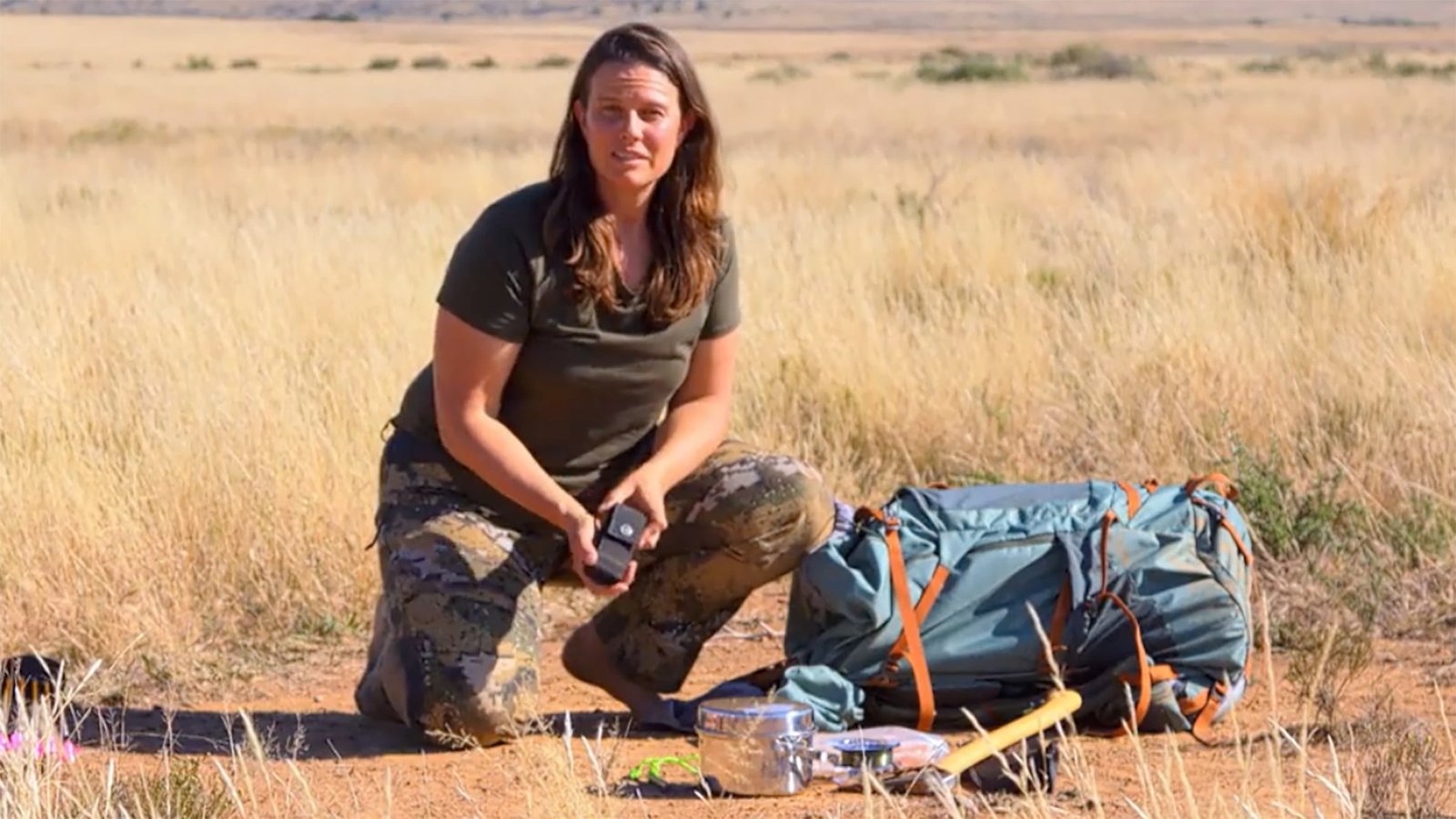
In the latest episode of ‘Alone’ Africa, a survivalist omits a crucial piece of gear and learns a tough lesson
Alone participants can bring ten pieces of gear with them (Photo: The History Channel)
What’s the most valuable survival tool that you can bring into the backcountry?
The answer you’ll get from a wilderness expert is likely to be “your intuition” or “your survival experience” or perhaps even “a good knife.”
But after watching 12 seasons of the outdoor reality show Alone, my answer has narrowed on a very specific item: the ferro rod. This small metal cylinder, made from the alloy ferrocerium, produces sparks when struck with steel.
For those unfamiliar with the rules of Alone, contestants are allowed to bring just ten items with them into the backcountry as they live off of the land for as long as possible. They choose their ten items from a master list made up of 60 or so gizmos, tools, and pieces of outdoor gear.
Every season, survivalists choose familiar items: a bow and collection of arrows, fishing line and hooks, saws, axes, plastic tarps, etc. The show publishes which items each survivalist chooses on its cast profiles page.
The ferro fire striker is, by my count, the second most-popular item that survivalists opts for, behind only the sleeping bag. And after watching the most recent episode of Alone Africa, I was again reminded why.
Another Survivalist Goes Home
(Spoilers Ahead!) During the seventh episode, which aired on July 31 and was titled “Echoes of Emptiness,” we finally saw Baha, the affable 50-year-old Kyrgyzstani-Canadian, tap out, departing the show after 18 days in the wild. His abandonment left just three contestants remaining: Nathan, Kelsey, and Katie.
One of Alone Africa’s biggest personalities, Baha lasted much longer than I predicted he would after I watched the first episode. In the season’s opener, Baha made a few curious decisions that placed him behind the eight ball. He decided to abandon his initial camping spot in favor of one two miles away. He decided to walk to the new spot during the heat of the afternoon, under the baking sun. And he chose to complete this trek despite not having any potable water.
When Baha reached his destination, he revealed another setback: he’d chosen not to bring a ferro rod into the Great Karoo desert, opting instead to rely on his skills with a bow-drill for creating fire.
It took Baha almost two days to successfully use this friction-based method to make an ember, which allowed him to finally boil drinking water.
Baha was just the sixth participant across Alone’s 11 traditional seasons (season 5 had survivalists work in two-person teams) to disregard the ferro rod. Nathan Donnelly (season 6), Matt Corradino and Colter Barnes (both season 8), Luke Olsen (season 10), and Jake Messinger (season 11) all left ferro rods at home.
What do all of these six have in common? All of them tapped out.
Overconfidence Leads to a Bad Decision
On Alone, having access to reliable fire is simply too important to ignore. Sure, some survivalists are talented with a bow and drill. But this method requires too much physical energy to complete, and is far less reliable than a ferro rod. During Alone seasons set in cold and wet locales, kindling eventually gets soaked by rain, rendering even the best friction setup useless.
Even in Alone Africa, the desert monsoons came in and drenched everything.
So, how do you maintain fire when everything is damp? Like the other six who tried Alone without a ferro rod, Baha had to find a way to keep his fire going ’round the clock. And at some point, this meant staying up all night to stoke the flames.
Time and again Alone, has shown that, in a survival situation, rest is almost as valuable as food. After working long days in the cold, survivalists need their recovery. And once Baha started staying up all night, his mood dropped, and his will to continue evaporated. No sleep = no mojo.
We’ve seen the ferro rod make and break participants in previous seasons. In season 1, Joe Robinet barely lasted 24 hours after he lost his ferro rod on the beach. In season 7, Shawn Helton also bailed after losing his.
During season 6, Nathan—arguably the heartiest survivalist that season—lasted a full 72 days in the wilderness despite not bringing a ferro rod. He instead allowed his fire to burn all day and night, sacrificing his sleep and recovery to that end. But eventually, the flames dried out the tree bows of his shelter. During the night his makeshift house caught fire, and he barely escaped with his life.
So, will Baha’s abandonment make the ferro rod a must-have for future participants? I have my doubts. One Alone alumnus told me that belief in one’s bow-drill skills is a common mindset with Alone cast members. Some of these people have a little too much faith in this skill.
And so long as overconfidence remains part of the human condition, some portion of Alone survivalists will continue to leave the ferro rod at home.
Destinations & Things To Do
Royalty in the Kinsmans – The Trek
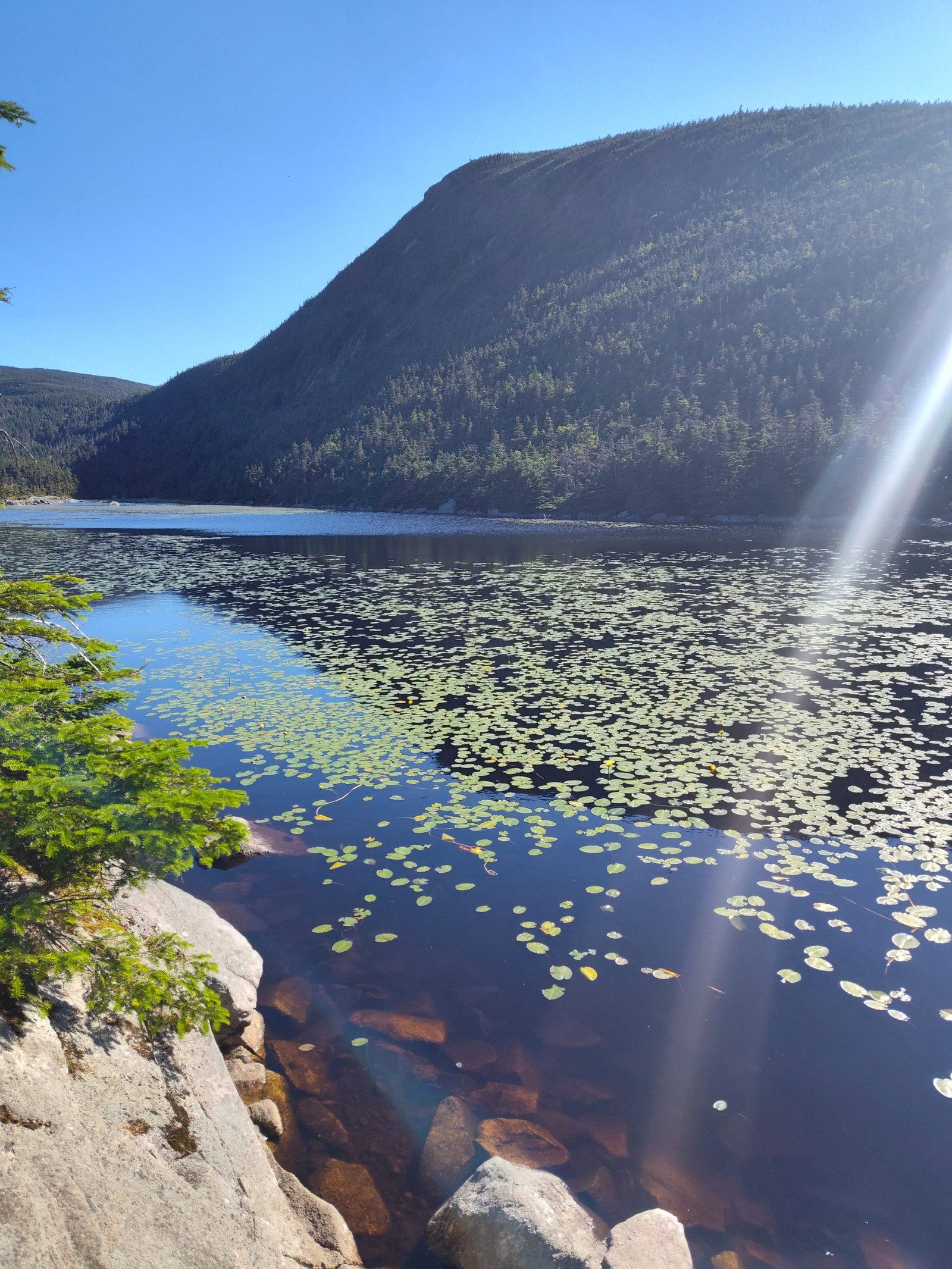
Day 100- 12 Miles today from Kinsman Notch to Kinsman Pond shelter, 4600 Feet Up, 2700 Feet down,
Planning Makes God Laugh
I got in early yesterday and a group was laying out plans with Patience from Welcome hikers hostel. They were all being very strategic about resupplies and everything through the Whites. I popped open my Fiddlehead double IPA and sat down to listen to the conversation.
I didn’t have a plan yet. I didn’t even know what was coming up next. Maybe it was the fear of the unknown I was avoiding. Now that I did Moosilaki though I understood what the Whites were in terms of technical hiking. It now made sense why the daily miles I’ve been hammering out would drop.
I then decided I would go ahead and lay out a four day conservative plan. No slack packing. I would just put on my pack and go into the Kinsmans.
The Kinsmans
The next day I felt much better even though my mileage was going to drop drastically. I had a 12 mile and a couple of 8 mile days laid out for the Kinsmans and then into Franconia. My only concern was the weather coming in as I would enter Franconia. I then went to bed real early and got a great night sleep.
This morning I looked at the weather and it still looked like weather would be coming in when I got above treeline on Franconia. So I decided to change the plan and bail out at the notch after the Kinsmans and do a zero the day of bad weather.
Let’s Go
Started this morning at 7:30 from Kinsman Notch and had to first tackle a long climb out of the gap (of course). It was cool morning and I had a full pack but for once I’ve gone light on the food and the water.
Even though I got a long haul before I get to water again I really need to stay light in the Whites. I might also be eating just peanut butter wraps for a couple of days but at least I won’t have to carry all that heavy weight on these technical hikes.
The first half mile out of Kinsmans Notch was about 1300 ft per mile but it wasn’t as bad as the southbound climb out of Kinsmans notch.
Quite Time
The woods however are eerily quiet once again. I don’t hear any sounds of any birds or anything other than my footsteps once again. Maybe that’s a reminder to empty my thoughts.
“What are you doing with life That’s what death asks you” Michael Singer
The next challenge was Mount Wolf. The hike up to Mount Wolf had a few technical sections some easy stuff and some not so easy stuff.
Heading down to the Eliza Brooke Shelter was a descent. It was actually quite fun. There were parts that I could fly on and go really fast. And then there were other parts that I had actually put my poles down and climb. But it was a fun hike. I got to a trail junction and realized I had already done seven miles and my speed was 1.8 miles per hour or better. I did not expect that kind of pace.
Big Blaze
I just stopped to look at my phone for a second and then when I looked up I was wondering if I was on the AT or if I had taken a side trail. It is easy to do in the Whites. The trails are named other than Appalachian Trail and blazes are minimal. When I looked up I saw the biggest fattest blaze I’ve seen yet.
Technical Climb
After the Eliza Brook shelter the trail climbed on what looked to be an old road bed. It was still an overall climb of over 2000 feet in 2 miles up to the South Kinsman Mountain but most of that elevation gain would come soon.
The climb then started to get technical after the waterfall section of Eliza Brook. It was beautiful plus had the magic serenade of the falling water as I did the technical climbs required. It was hand hold climbs that were very difficult but I was having fun.
I continued to climb leaving Eliza Brook. There are a few sections that were technical or acquiring me to basically do some rock climbing.
Magical Swamp
After a long very difficult rock climb all the sudden I stepped out into a swamp. The swamp had a boardwalk that went through it.
All around the swamp though on one side was steep rock walls. It was the most spectacular swamp I’ve seen so far on the trail. I was surprised to also see that the Kinsman shelter was only 3 miles away.
I’m starting to think that one of the things one of the lessons that the Whites are teaching me is not to fear the unknown. People have been fear mongering the Whites so much that I was so apprehensive to cross them. But after Moosilaki I started to understand. There are some technical sections and some crazy parts but just like anything challenging you can do it by taking one step at a time.
Cliff Climbing
Trail went then went up a small creek ravine. After climbing the boulders up the ravine and a few technical climbs trail really started doing a hard climb. I need to learn how to put my poles in my pack because the climbs were so technical poles were a hindrance. I had to use my hands to find cracks to pull myself up. Every time I turned there would be another climb. Eventually I reached the summit of South Kinsman Mountain and the trail was flanked by scrubby pines not even head high.
I passed from South Kinsman Peak through Kinsman Peak. The trail in parts was pretty fast and cruisy but in other parts was very technical. Had a few more technical climbs and a few more technical dissents.
Home at Last
And then I reached the Kinsman Pond shelter. I picked up the AMC pass for 10 dollars. I know people complaining about it but the camp was so clean and organized. Tor, the campground host had cleaned the shelter, and cleaned and disinfected the privy.
I went down to the pond to grab my water and it really was a frog water. Knockerz has joked about frog water in the past when I had to pull swamp water in order to have a drinking source. This is definitely frog water because there was a frog in it and tad poles. But it wasn’t swampy frog water just a big beautiful pond.
I sat down by the lake and ate my dinner by the pond. The pond was covered in lily pads with little yellow flowers and reflected the mountain ridge on its surface. A great ending to a great day.
This website contains affiliate links, which means The Trek may receive a percentage of any product or service you purchase using the links in the articles or advertisements. The buyer pays the same price as they would otherwise, and your purchase helps to support The Trek’s ongoing goal to serve you quality backpacking advice and information. Thanks for your support!
To learn more, please visit the About This Site page.
-

 Brand Stories2 weeks ago
Brand Stories2 weeks agoBloom Hotels: A Modern Vision of Hospitality Redefining Travel
-

 Brand Stories1 week ago
Brand Stories1 week agoCheQin.ai sets a new standard for hotel booking with its AI capabilities: empowering travellers to bargain, choose the best, and book with clarity.
-

 Destinations & Things To Do2 weeks ago
Destinations & Things To Do2 weeks agoUntouched Destinations: Stunning Hidden Gems You Must Visit
-

 Destinations & Things To Do1 week ago
Destinations & Things To Do1 week agoThis Hidden Beach in India Glows at Night-But Only in One Secret Season
-

 AI in Travel2 weeks ago
AI in Travel2 weeks agoAI Travel Revolution: Must-Have Guide to the Best Experience
-

 Brand Stories4 weeks ago
Brand Stories4 weeks agoVoice AI Startup ElevenLabs Plans to Add Hubs Around the World
-

 Brand Stories3 weeks ago
Brand Stories3 weeks agoHow Elon Musk’s rogue Grok chatbot became a cautionary AI tale
-

 Asia Travel Pulse4 weeks ago
Asia Travel Pulse4 weeks agoLooking For Adventure In Asia? Here Are 7 Epic Destinations You Need To Experience At Least Once – Zee News
-

 AI in Travel4 weeks ago
AI in Travel4 weeks ago‘Will AI take my job?’ A trip to a Beijing fortune-telling bar to see what lies ahead | China
-

 Brand Stories4 weeks ago
Brand Stories4 weeks agoChatGPT — the last of the great romantics





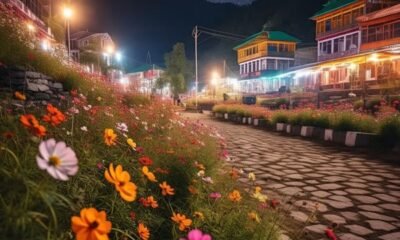





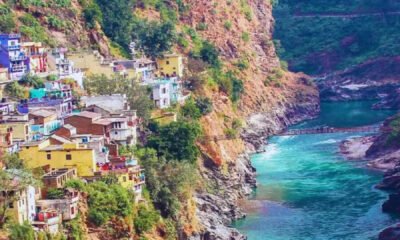

You must be logged in to post a comment Login